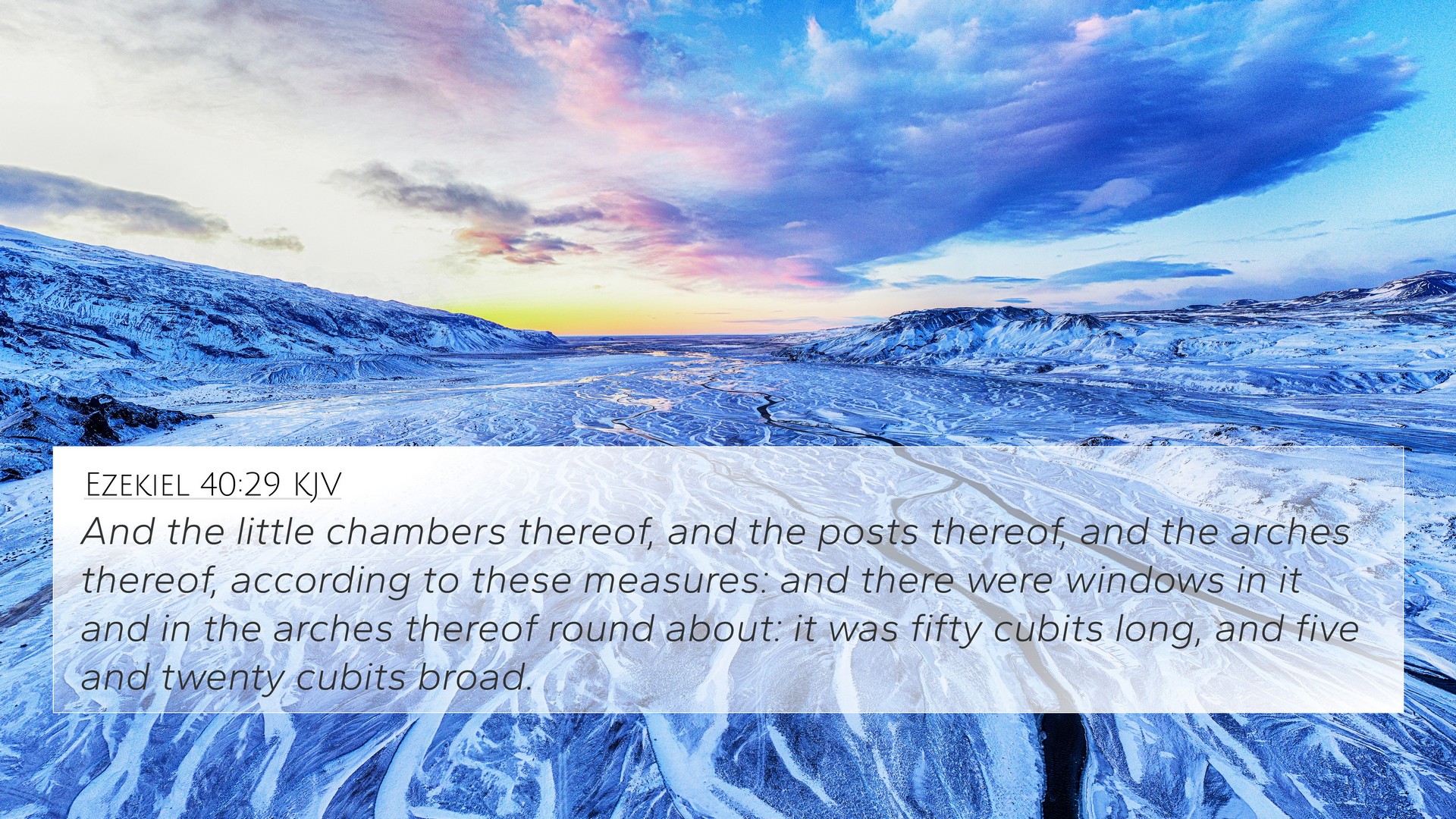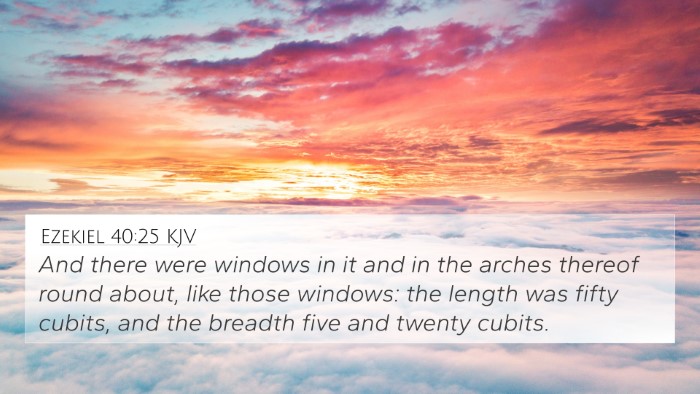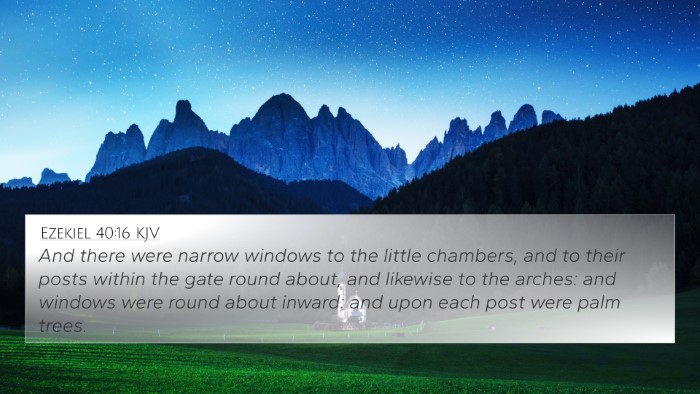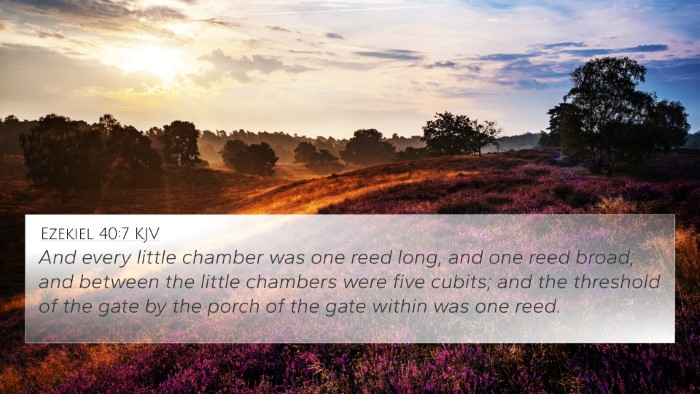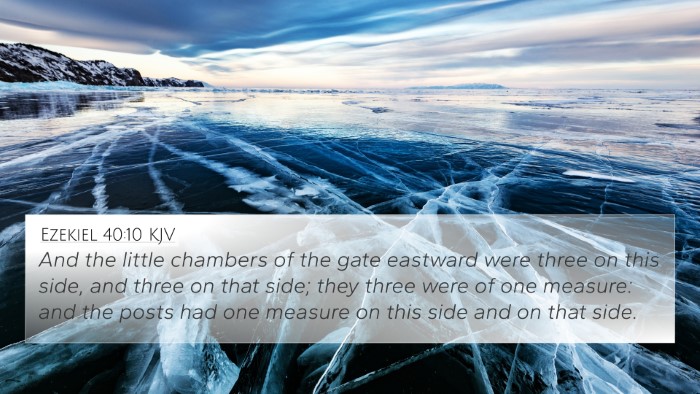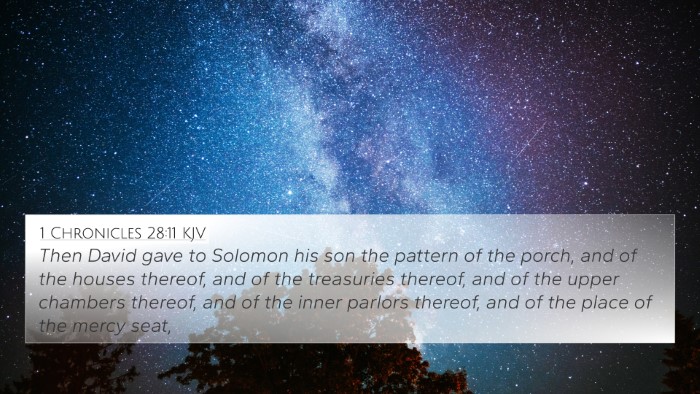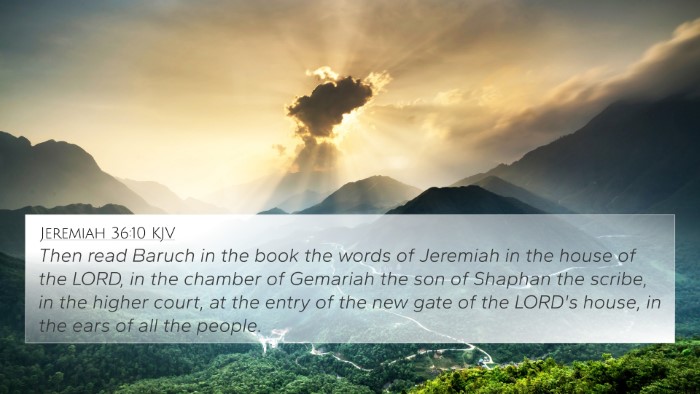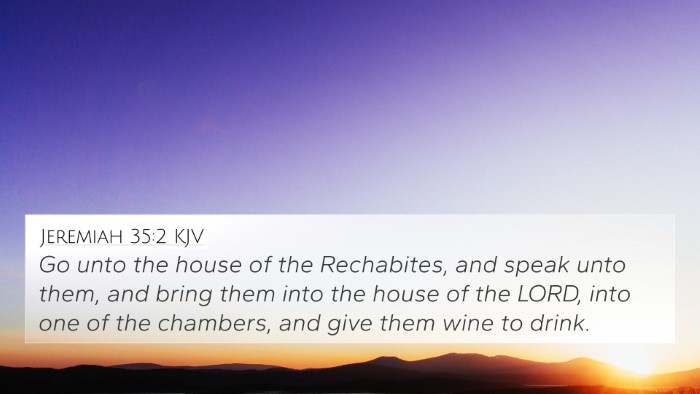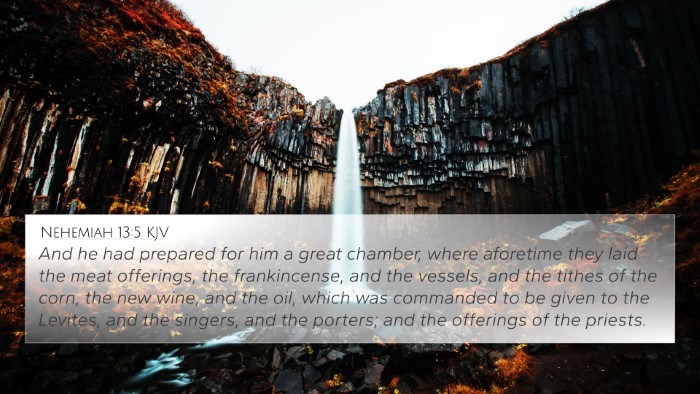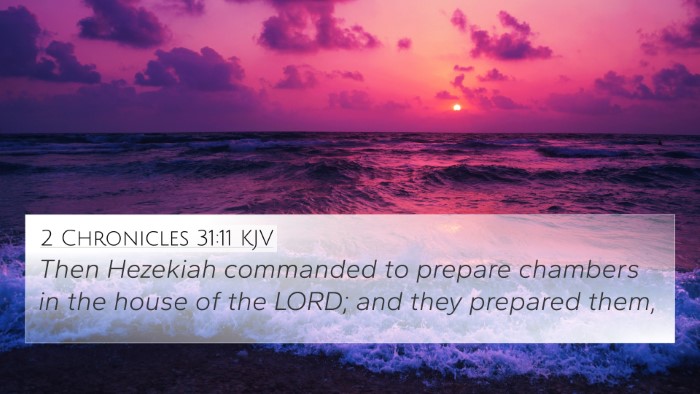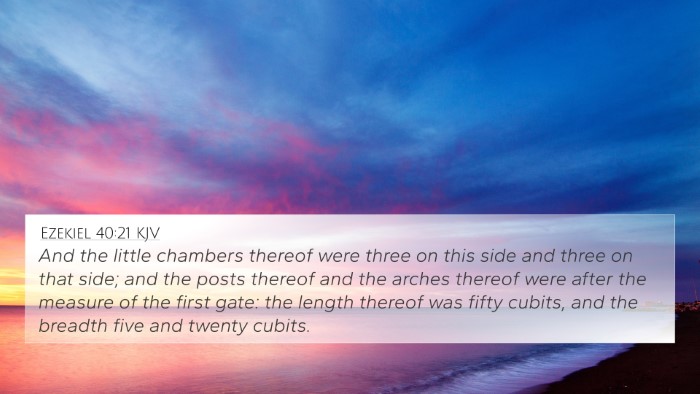Ezekiel 40:29 - Meaning and Interpretation
Ezekiel 40:29 states: "And the little chambers thereof were thirty and the little chambers of the east gate were three on this side and three on that side; the little chambers thereof were thirty upon thirty in the east gate. " This verse is part of a detailed vision that the prophet Ezekiel received regarding the future temple and its structure, serving both as a blueprint for the temple and as a symbol of restoration for the people of Israel.
Overview of Ezekiel 40:29
This scripture is set against the backdrop of God's promise to His people, emphasizing the importance of proper worship and the restoration of the temple. The vision contains intricate details about the layout of the temple, which Matthew Henry, Albert Barnes, and Adam Clarke all elaborate on in their commentaries.
Commentary Insights
-
Matthew Henry describes the temple's design as a means to highlight God's holiness and the reverence required in worship. He emphasizes that the specific measurements and arrangements are meant to signify order, beauty, and God's dwelling among His people.
-
Albert Barnes focuses on the detailed nature of Ezekiel’s vision, using it as a tool to understand how God’s house is to be filled with glory. He points out that these descriptions were meant to inspire hope in the exiled Israelites, reminding them of God's promise of restoration.
-
Adam Clarke provides a comprehensive analysis of the chambers and their significance within the temple framework. He suggests that these structures serve to create a space for worship and purification, showcasing God’s desire for His people to return to a place of sacred communion.
Connections to Other Scriptures
Ezekiel 40:29 resonates with various other biblical texts that enhance our understanding through thematic connections and cross-referencing Biblical texts. Below are several pertinent cross-references:
- 1 Kings 6:5-6 - Discusses the chambers in Solomon's temple, showing structural similarities.
- 2 Chronicles 3:9 - Details the dimensions of the temple, emphasizing God’s intricate designs.
- Ezekiel 42:11 - Continues the description of chambers used for priestly purposes, reinforcing the concept of worship space.
- Hebrews 9:24 - Relates the earthly shadow (the temple) to the heavenly reality, emphasizing the significance of Christ's ministry.
- Revelation 21:22 - Describes the heavenly temple, paralleling the themes of sanctuary and divine presence.
- Psalms 27:4 - Expresses the desire to dwell in the house of the Lord, connecting to the theme of worship and sanctuary.
- Isaiah 56:7 - Proclaims the house of prayer intended for all nations, highlighting the inclusivity of God's presence.
Inter-Biblical Dialogue
The verse encourages the practice of cross-referencing Bible study methods by inviting readers to explore connections between Old Testament prophecies and their New Testament fulfillments. Understanding these links enhances the depth of one's study and brings to light the continuity of God's plans:
- Utilizing a Bible concordance can aid in finding similar themes and messages throughout the scriptures.
- A Bible cross-reference guide is a valuable tool in exploring the unity between various passages.
- For those looking into detailed cross-reference between Gospels, consider how this temple concept is echoed in Christ's teachings about worship.
Thematic Connections
Landmarks like Ezekiel’s detailed vision not only serve historical purposes but also thematic ones. They reflect God’s heart for His creation— His desire to dwell among His people and the call to holiness and order in worship. This alludes to:
- Hope for Restoration: Filled with anticipation for the future fulfillment of God's promises.
- Divine Presence: The emphasis on worship underscores the relational aspect between God and humanity.
- Community Rebuilding: The specific instruction hints at a community united under God’s rule and presence.
Conclusion
To sum up, Ezekiel 40:29 serves as a rich illustration of God's careful design for sacred space and worship. Its connections with other scripture deepen one's understanding of the covenantal relationship between God and His people. By engaging in comparative Bible verse analysis and understanding the connections between Bible verses, believers can cultivate a richer perspective of God's Word and its comprehensive narrative woven throughout scripture.
